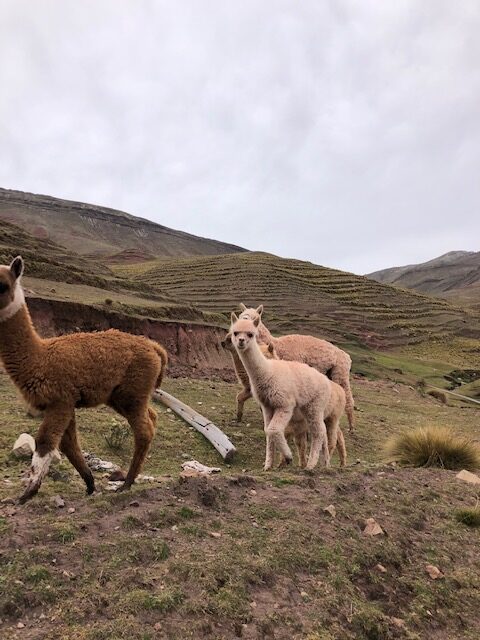Tips and Tricks for Traveling to Peru
As of May 2021, masks and shields are required on public transportation, Covid tests are required when entering the country and there is a 9PM curfew. Click here for more information about traveling to Peru during the pandemic.
The main neighborhoods of Lima are exceptionally clean. There is very little garbage or graffiti etc. The scene changes quite dramatically on the outskirts of the main city centers.
Pisco Sours are the drink of choice in the country. The Cusqueña is the best local beer. All of the local wine is very sweet.
Be ready for some early mornings. Activities and tours generally start very early to beat the rush and the heat. I’m talking 4AM wakeup calls.
Dogs are everywhere. Many of them aren’t pets and will wander the streets and even follow you. I didn’t come across any dangerous ones but always use caution.
Peruvians are short. The average height is 5.3.
Peru is 60% Catholic and you will find churches and cathedrals everywhere. Most main streets and airports have shrines set up.
Peru is not the most efficient country. You will see lines around the block at banks. People complaining at airports. Long waits for coffee. You have to be ready to go with the flow!
Outside of the main tourist streets in Peru, many residential buildings appear unfinished. This is intentional. Residents will keep the outside under construction, but the interior complete so they don’t have to pay the 2nd floor income tax.
Peru has a very corrupt history, but in the 1980s things turned a corner and the economy started to improve. Politics are still a hot topic.
Sol is the currency. You’ll want to have cash on hand for any of the markets or street vendors. Almost everything is very reasonably priced. Tipping 10% is considered standard.
Despite what I kept reading, Uber is available in most cities in Peru.
Heckling is very common in Cusco, downtown Lima and Huacachina.
There is a strong police presence. Except for pick pockets, the main cities are considered safe.
Alpacas and llamas and mules and donkeys are often used interchangeably with tourists and locals think that is silly. For ex. llamas are the ones that hang out in Machu Picchu. Learn the differences!
Most tourists visit Cusco to see Machu Picchu, hike or go to a retreat.
Hiking to Machu Picchu is also very popular. Plan ahead for these adventures as you’ll need a permit for some.
Hiking the Salkantay trail involves all different terrains at up to a 15,000ft altitude. Click here for my entire experience.
Coca tea is offered all over the Cusco region to help tourists acclimate to the high altitude. The local pharmacies all carry medicine for anyone having a hard time.
Machu Picchu is actually at a lower elevation than Cusco. So if you can get acclimated in Cusco you’ll be good to go at Machu Picchu!
Get the seafood in Lima and the meats in Cusco. Potatoes are in everything.
Eggs, bread and papaya juice are the standard breakfast items at hotels. Milk doesn’t come with the coffee.
Lima has a strong surfing community, especially in MiraFlores and Barranco. CALA is a great place to watch the surfers and enjoy ceviche.
Paracas is Peru’s small beach community. The tourists come here to see the “Poor Man’s Galapagos Islands.” The boats that run here pack in the people. It’s a 2 hour ride, it smells and it’s hard to hear if you are in the back. But the birds and sea life are very cool.
Haucachina is the only remaining desert oasis in South America. The dunes are unexpectedly wondrous and at times you would never know the Ica town is just a 7 minute drive away. Click here for the entire experience!
You can pay almost any taxi or tour guide to take you anywhere you want on a private tour if the times don’t match with your schedule.
The climates can change dramatically – from fog and wind on the coast, warm and sunny by the desert to cold and damp in the mountains. Click here for packing tips!
The locals are the nicest people you will ever meet. Everyone is kind and will go out of their way to be helpful, even if there is a language barrier.



